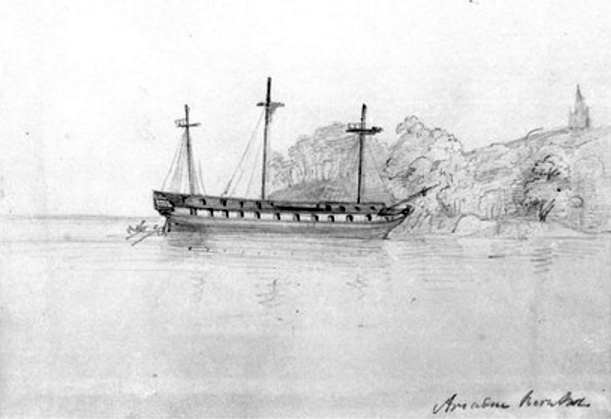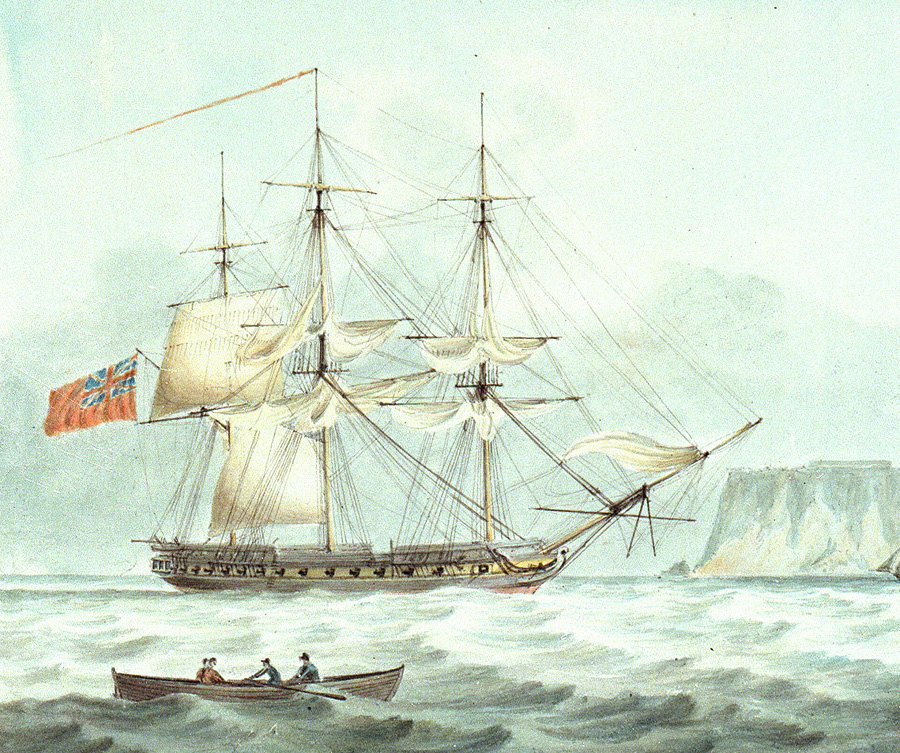HMS Lavinia
The only one of her class, the 40 gun frigate Lavinia was built in Milford Haven in 1797 initially by Philemon Jacobs but completed fitting at Devonport in 1806. The long guns that she was originally designed for were replaced by shorter and lighter carronades which meant that more could be fitted in the same hull, giving her a total of 50 guns when launched.
In 1809 the Lavinia took part in the ill-fated Walcheren Expedition along with the frigate Amethyst also wrecked in Plymouth Sound.
By 1816 the Lavinia was laid up in Plymouth and in 1836 she was converted to a lazaretto in Liverpool, a quarantine station for maritime travellers. In 1852 she was back in Devonport as a coal depot for the new steam Navy.
On 1st March 1868 the 3037 ton Hamburg Amerika Line steamship Cimbria was in Plymouth on a run from Hamburg to New York, she collided with the Lavinia and sank her. The Lavinia was sold to Mr Dockerill in March 1870 and was broken up where she lay.
The Cimbria herself was sunk in collision with the British steamship Sultan near Borkum Island thirteen years later and 389 lives were lost.
![]() If you have any more information about this ship then please contact us.
If you have any more information about this ship then please contact us.

HMS Lavinia in ordinary in the Hamoaze

HMS Lavinia off Berry Head (NMM)
